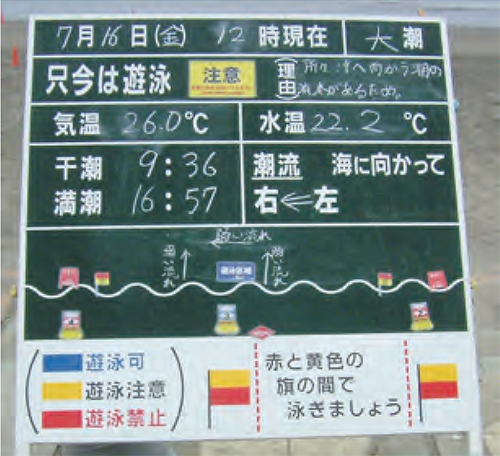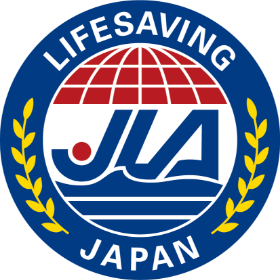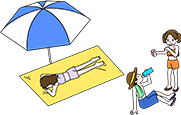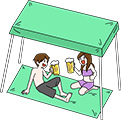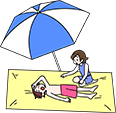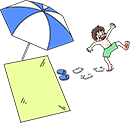Let’s Learn Beach Safety!
At low tide, tide pools sometimes form in rocky areas, offering a great opportunity to observe marine life. However, these areas are usually outside designated swimming areas, and the currents can be unpredictable. Avoid entering the water in rocky areas, as the footing is often slippery and unstable. If the waves are high, stay away from the rocks. Always wear a life jacket, even in rocky areas.
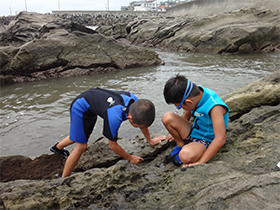
Playing without life jackets
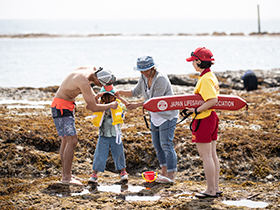
Let's wear life jackets !
Do not play around the river mouth. The area where a river meets the sea has complex currents due to the mixing of fresh and seawater. The seabed shape can change easily, and water depth and currents fluctuate with the tide.
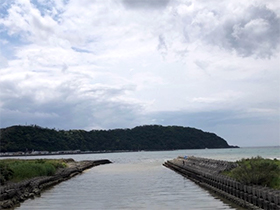
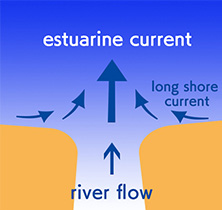
Some stranded marine creatures can be dangerous. Jellyfish tentacles can sting, so avoid touching any marine life unnecessarily.If stung, carefully remove visible tentacles with tweezers or wear rubber gloves if using your hands.
If removal is difficult, rinse the area gently with seawater. Then, put the affected area in 42–45°C warm water or use an ice pack if warm water is unavailable.
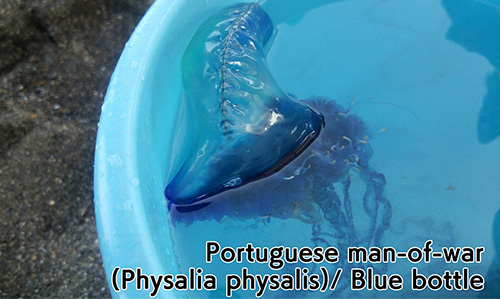
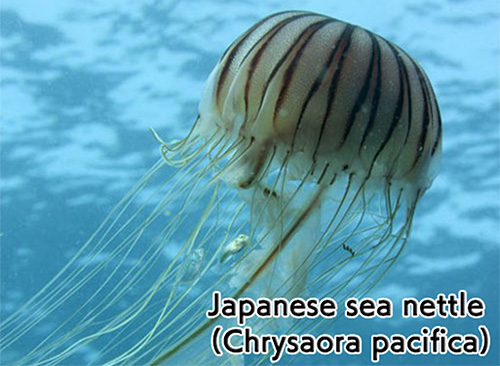
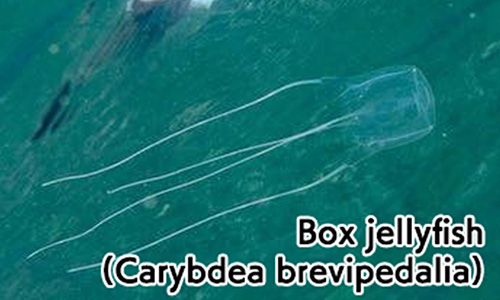
The sun’s reflection off the sand and water can be intense. Protect yourself by using sunscreen, wearing a hat, and creating shade with an umbrella or parasol. Stay hydrated and be aware of heatstroke.
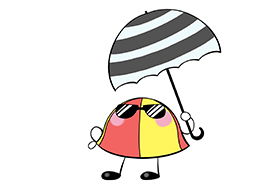
Sandy beaches are unstable so be careful not to sprain your ankle. Muscle cramps in the water can lead to panic and drowning. Always warm up before swimming.
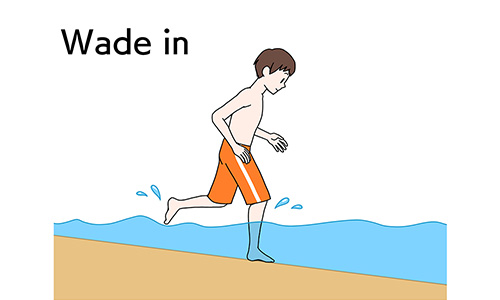
Enter the water slowly while checking the depth and seabed conditions.
Exposure to UV rays and sweating lead to dehydration, and drinking alcohol makes it even worse. Drinking impairs judgment and increases the risk of drowning. Studies show that alcohol is involved in at least 30% of confirmed drowning cases. 'Don’t swim after drinking' is a basic and essential rule for adults to prevent drowning.
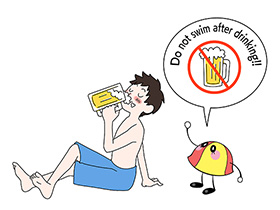

Entering the ocean when you are tired or have not had enough sleep is dangerous. Make sure you are in good physical condition before swimming.

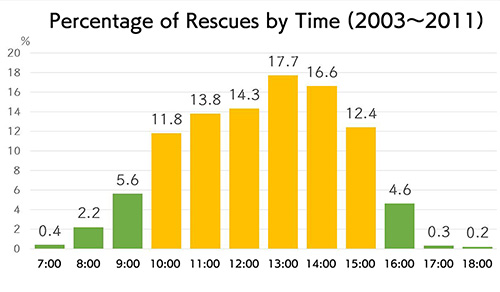
Strong winds can lift umbrellas and tents, making them hazardous to others. Tilt umbrellas slightly into the wind, anchor them deep in the sand, and secure them with weights to prevent them from blowing away.
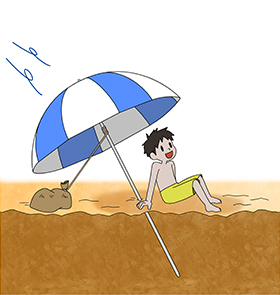
"KEEP WATCH" Children are smaller than adults and can easily be knocked over by waves or step into deep water. Always keep them within arm’s reach and maintain constant supervision.
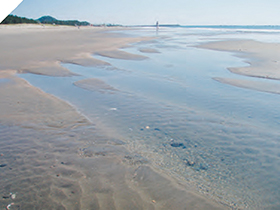
Waves can make holes in the sand under the water, so be careful where you step.

Guardians must not take their eyes off children near the water.
Rip currents are powerful flows of water moving away from shore.
About 50% of drowning accidents on the beach are caused by these rip currents (2013-2019).
Do not swim near river mouths, breakwaters, and rocky areas where rip currents are common.
If caught in a rip current, stay calm, move sideways out of the current, and escape safely.
Link: Reference "Public Awareness Poster for Rip Currents"
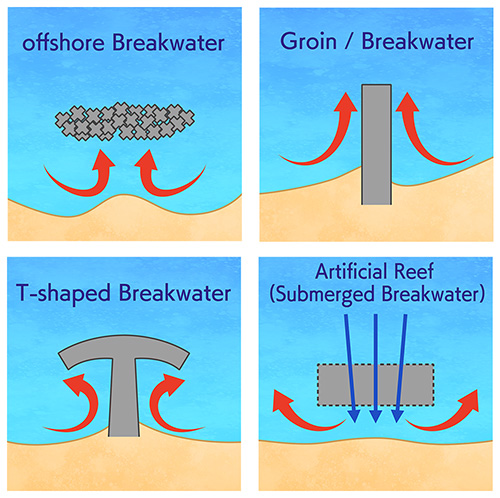
The edges of embankments are very dangerous as there is high risk of falling into the water. They can also become slippery due to waves splashing over them. When going near the water, wear non-slip sandals with heel straps or aqua shoes, and avoid leaning over the edge to look into the water. When the waves are high, do not approach the embankment.
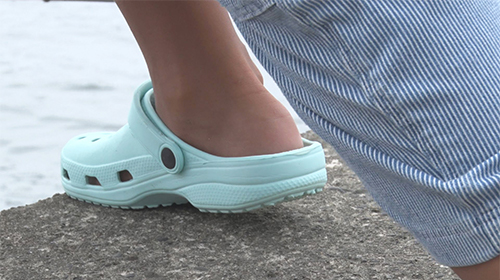
Do not wear sandals without heel straps.
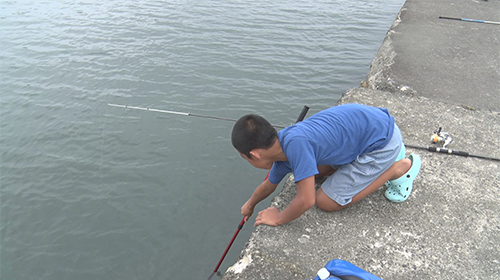
Do not lean out over the embankment.
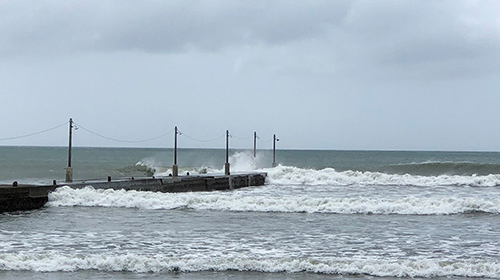
How the embankment looks when the waves are high.
Large floats are easily affected by the wind. When using one, be mindful not to drift away. If your float is carried offshore by the wind, do not chase it because trying to retrieve it could lead to exhaustion and can put you at risk of drowning.
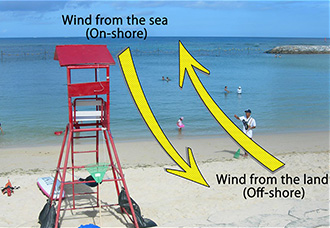
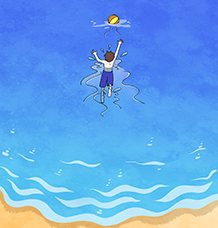
Do not swim alone or without your float, even within the designated swimming area. Always wear the appropriate safety gear and make sure you are properly prepared. Being prepared is key to staying safe.
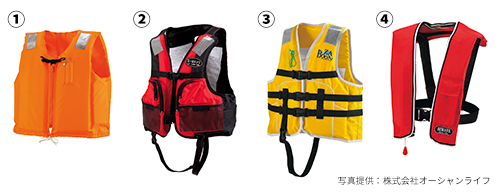
[Types of Life Jackets]
All items shown in the photos comply with vessel inspection standards (some with specific conditions).
① life jacket with bright colors
①②③ with Reflection panels. Easier to spot during search operations
②③ with crotch straps and waist belts. Helps to prevent slipping off. Children should wear life jackets that fit properly. (③), and there are automatic inflating types (④) that activate upon water contact.

Wear sandals or beach shoes. Sand temperatures can exceed 60°C in summer, which may cause burns, especially on children's feet. Additionally, broken shells or glass fragments might injure bare feet. Wear sandals or beach shoes to prevent burns and injuries.
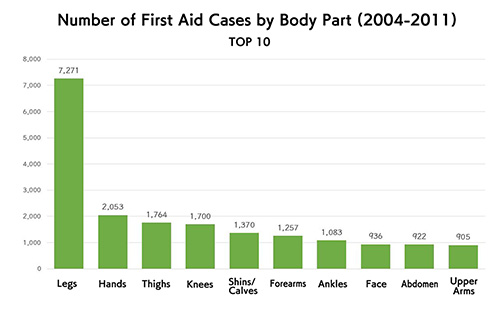
The beach belongs to everyone including marine creatures. Take your trash home and pick up any litter you see to maintain a pleasant environment. Help preserve the ocean for all living creatures by keeping it clean.
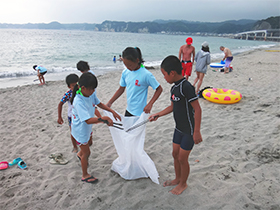
When picking up trash, avoid touching it directly with bare hands.
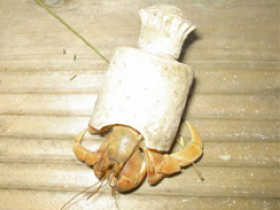
It's a "hermit crab." Its home is a detergent cap...
Stay informed about ocean conditions. Don’t hesitate to ask lifeguards about safe swimming areas and potential hazards.
